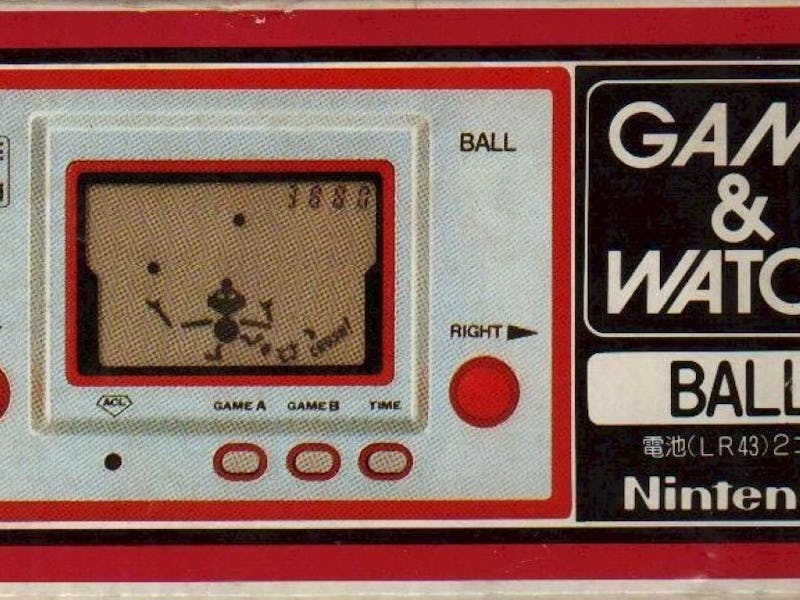45 Years Ago, A Chance Encounter On A Train Changed Gaming Forever
Inspired by a bored businessman.

They say idle hands are the devil’s playground. The implication is that when we’re not busy or distracted, we’ll get into trouble. If that’s true, then the devil must be awfully bored, because it’s hard to imagine anyone in the modern world going anywhere or doing anything without some sort of handheld digital distraction. From cell phones to Steam Decks to the Nintendo Switch 2, there’s no shortage of gadgets for un-idling our hands. This wasn’t always the case, though. Forty years ago, a chance encounter on a Japanese commuter train revolutionized our games, and our culture, forever.
Legendary Nintendo designer Gunpei Yokoi was on an ordinary commute when something caught his eye. He noticed a businessman playing with a calculator. It wasn’t a game or anything, but the way he mindlessly toyed with the device inspired in Yokoi the idea that people want portable games. A practical hook, making the pocket game also function as a pocket watch, helped Yokoi sell the idea. In April 1980, the Game & Watch series was born.
Yokoi’s first Game & Watch unit, Ball, featured a simple juggling game. It was sleek, compact, and unlike anything else at the time. From there, the series exploded. Between 1980 and 1991, Nintendo released 59 different Game & Watch titles across several series, including Silver, Gold, Wide Screen, Multi Screen, and Tabletop.
These games featured instantly recognizable Nintendo characters such as Mario and Donkey Kong, and laid the groundwork for what would become the company’s iconic IPs. Donkey Kong (1982), in particular, was monumental. It was one of the best-selling Game & Watch units, and also introduced the D-pad, a now-standard feature on virtually every game controller that followed.
In terms of sales, Game & Watch was a runaway success. Over 43 million units were sold worldwide, a staggering figure considering the era and the simplicity of the hardware. It cemented Nintendo’s reputation as an innovator and demonstrated a lucrative demand for portable, accessible gaming. It also proved that games didn’t need to be complicated to be compelling. This is a lesson that Nintendo has returned to again and again over the decades.
This magazine ad from the 1980s shows us how Nintendo understood the value of portable gaming from the very beginning.
The influence of Game & Watch on Nintendo’s development strategy cannot be overstated. Its success emboldened the company to double down on handheld gaming, culminating in the release of the Game Boy in 1989 (another Yokoi creation.) The Game Boy inherited much of its design DNA from the Game & Watch, including its focus on portability, simplicity, and battery life over cutting-edge graphics. These priorities helped the Game Boy dominate the market and laid the foundation for Nintendo’s handheld dominance well into the 21st century.
Even as Nintendo moved into more advanced hardware, the spirit of Game & Watch never disappeared. Elements of its design philosophy resurfaced in the dual-screen layout of the Nintendo DS, and its minimalist charm has been echoed in many of the company’s smaller, more experimental projects. Projects like Nintendo Labo and Mario Kart Live: Home Circuit are tied to the risk-taking legacy of Game & Watch. It really exemplified Nintendo’s core philosophy “to put smiles on the faces of everyone we touch.”
This commemorative Legend of Zelda reissue offered a modern upgrade to the format that started it all.
Nintendo has also revisited the series directly, most recently with the 2020 and 2021 releases of special edition Game & Watch systems celebrating Super Mario Bros. and The Legend of Zelda, respectively. These collectible devices paid homage to the original line while adding modern flourishes like color screens and rechargeable batteries, highlighting how enduring the concept remains.
The Game & Watch may have begun as a novelty born of a train ride, but its legacy is nothing short of monumental. It turned Nintendo from a modest toy company into a global pioneer of interactive entertainment, and its impact still ripples through every piece of hardware the company makes today. In a world of 4K consoles and cloud gaming, it's easy to overlook a device with a single game and an LCD screen. But the Game & Watch was more than just a gadget, it was Nintendo’s first great leap into the future. And, fittingly, it fit right in your pocket.